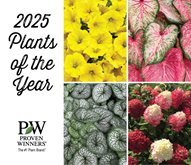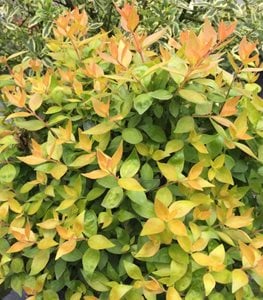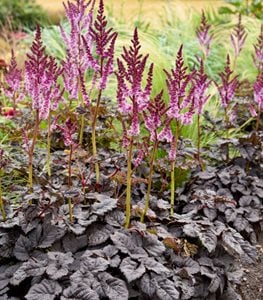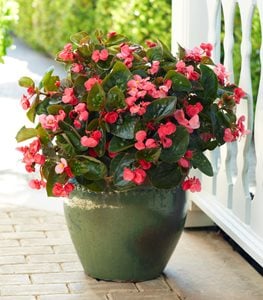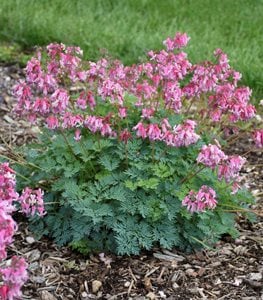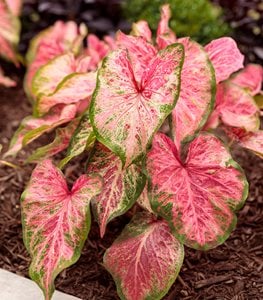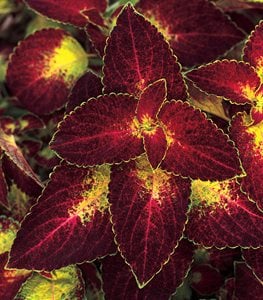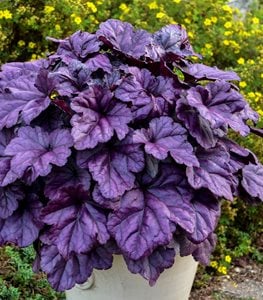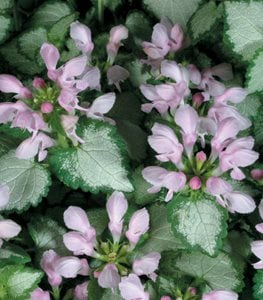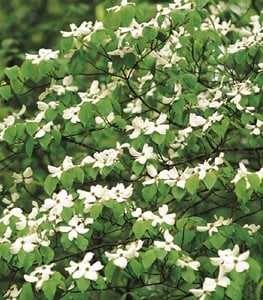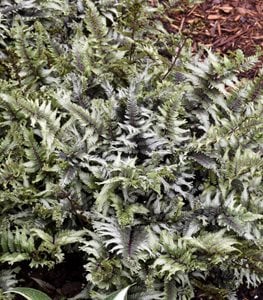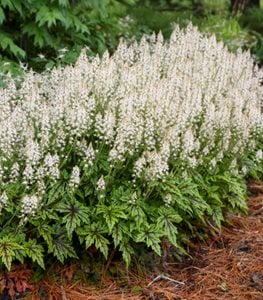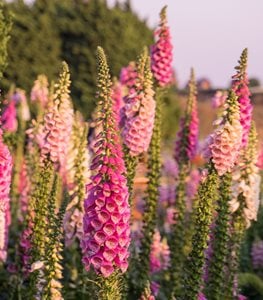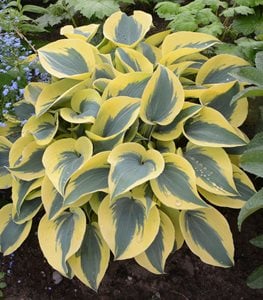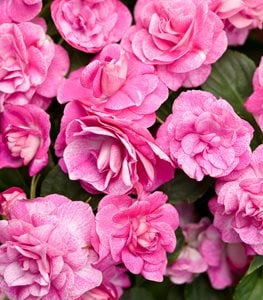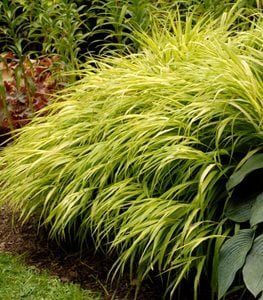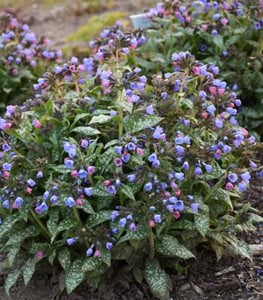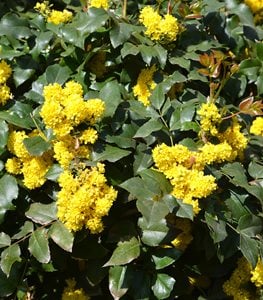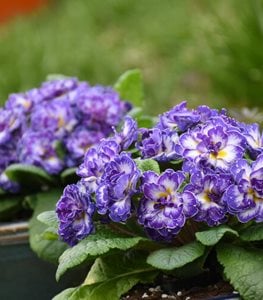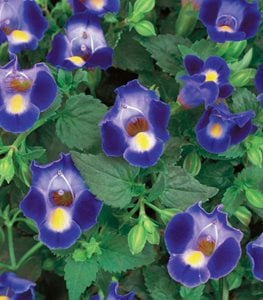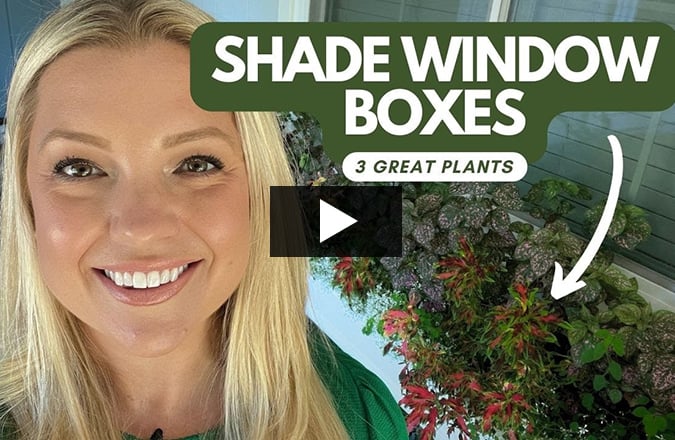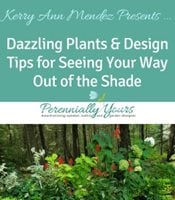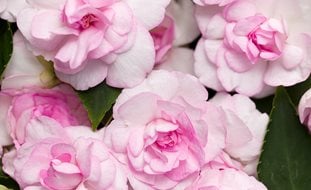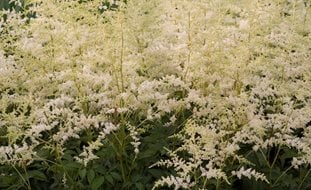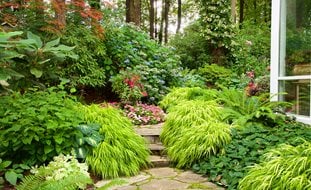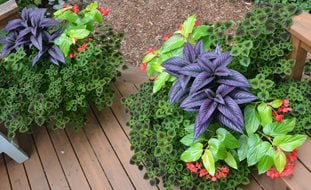21 Shade-Tolerant Plants for Beautiful Low-Light Gardens
From bold foliage to colorful blooms, these shade-loving plants will thrive in the darkest corners of your garden.Gardening in the shade has the reputation of being difficult, but it doesn’t have to be. By choosing the right shade-loving plants, it’s possible to have a beautiful landscape even in limited light. Some of the most popular garden plants are reliable standbys for a reason: with the right location and care, they provide season-long enjoyment even for novice gardeners.
Here are some of the best shade-tolerant plants to get you started on the road to a lush, shady oasis:
“Just because a plant tolerates shade doesn’t mean it thrives in it—knowing the difference is key.” — Rebecca Sweet, Harmony in the Garden
ABELIA (Abelia spp.)
Plant type: Shrub
Zones: 4-11, depending on the variety
Exposure: Full sun to part shade
Height/Spread: 2 to 10 feet tall, 2 to 8 feet wide
Bloom time: Spring to fall
One of the best shade-tolerant shrubs, Abelia is a low-maintenance plant, with glossy foliage and long-blooming tubular flowers. While it also thrives in sun, varieties like Funshine® and ‘Kaleidoscope’ tolerate moderate shade, especially in warmer climates. Great for foundation plantings and borders. Learn more about how to grow abelia.
Pictured: Funshine® abelia from Proven Winners.
ASTILBE (Astilbe spp.)
Plant type: Perennial
Zones: 4-8
Exposure: Full sun to shade; flowers best in partial sun
Height/Spread: 1 to 4 feet tall and wide
Bloom time: Summer
A shade garden favorite, astilbe produces showy summer plumes in pink, red, white, or violet above ferny foliage-perfect for brightening shaded borders after spring bloomers fade. Prefers moist, rich soil and partial shade. Learn more about growing astilbe.
Pictured: 'Dark Side of the Moon' astilbe from Proven Winners.
BEGONIA (Begonia spp.)
Plant type: Annual
Zones: 10-11, usually grown as an annual
Exposure: Partial sun to shade
Height/Spread: 6 to 36 inches tall, 6 to 12 inches wide
Bloom time: Early summer to frost
Begonia is a popular bedding plant, providing months of continuous color from summer into fall. Single or double flowers occur in a wide range of colors. Use this shade-loving plant in pots, hanging baskets, and to brighten up shady areas of the yard. Read more about how to grow begonia plants.
Pictured: Surefire® Rose begonia from Proven Winners.
BLEEDING HEART (Lamprocapnos syn. Dicentra spectabilis spp.)
Plant type: Perennial
Zones: 3-9
Exposure: Partial shade
Height/Spread: 6 inches to 3 feet tall, 1 to 3 feet wide
Bloom time: Late spring to early summer
Known for its romantic, heart-shaped flowers on graceful arching stems, this shade-loving perennial thrives in shady woodland settings. Best in rich, moist soil, with spring bloom followed by summer dormancy. Pair with hostas to hide fading foliage. Learn more about how to grow bleeding heart plants.
Pictured: ‘Pink Diamonds’ fern-leaved bleeding heart from Proven Winners.
CALADIUM (Caladium spp.)
Plant type: Bulb
Zones: 9-11, grown as an annual in colder zones
Exposure: Partial to full shade
Height/Spread: 12 to 24 inches tall and 8 to 24 inches wide
With bold, colorful foliage in white, pink, and red variegation, caladium adds vibrant color to deep shade. This tropical annual thrives in containers or shady beds, especially in warm, humid conditions. Learn more about growing caladiums.
Pictured: Heart to Heart® 'Blushing Bride' caladium from Proven Winners.
COLEUS (Plectranthus scutellarioides, syn. Solenostemon scutellarioides)
Plant type: Annual
Zones: 10-11, usually grown as an annual
Exposure: Shade to full sun, depending on variety
Height/Spread: 6 inches to 3-1/2 feet tall and 1 to 3 feet wide.
Grown for its vibrant, patterned foliage, coleus brings bold color to shady beds and containers. Prefers morning sun with afternoon shade, rich soil, and consistent moisture. Excellent for borders or as a container accent. Learn more on how to grow coleus.
Pictured: ColorBlaze® Dipt in Wine coleus from Proven Winners.
CORAL BELLS (Hechera spp.)
Plant type: Perennial
Zones: 4-9
Exposure: Shade to full sun, depending on variety
Height/Spread: 6 inches to 3-1/2 feet tall and 1 to 3 feet wide
With foliage in shades from lemon yellow to deep burgundy, coral bells add bold color and texture to shady beds, borders, and containers. Easy-care and shade-tolerant, especially in rich, moist, well-drained soil. Learn more on growing coral bells.
Pictured: Dolce® 'Wildberry' coral bells from Proven Winners.
DEADNETTLE (Lamium spp.)
Plant type: Perennial
Zones: 4-9
Exposure: Partial shade to full sun
Height/Spread: 3 inches to 2 feet tall, spreads 3 feet or more
A low-maintenance groundcover with silver or variegated foliage that brightens deep shade. Blooms in pink, white, or lavender in spring and spreads quickly, even in dry shade or under trees. Check for invasiveness in your region.
“Lamium has beautiful flowers and heart-shaped leaves that will spill over and do beautifully in a shade container.” — Jenny, Gardening with Creekside
Pictured: Pink Chablis® deadnettle from Proven Winners.
DOGWOOD (Cornus spp.)
Plant type: Perennial, shrub, or small tree
Zones: 3-9, depending on the variety
Exposure: Partial shade to full sun
Height/Spread: 10 to 40 feet tall and wide
Valued for its spring blooms and elegant form, dogwood thrives in dappled shade, especially woodland-style settings. Smaller tree varieties suit urban gardens or mixed borders, pairing well with hostas and ferns. Learn more about growing dogwood.
FERNS (Various)
Plant type: Perennial
Zones: 3-11, depending on the variety
Exposure: Partial sun to shade
Height/Spread: Varies according to genus and species
Essential for woodland and shade gardens, ferns add lush texture with their graceful fronds. Most thrive in rich, moist soil, though some adapt to dry shade once established. Pair beautifully with other classic shade plants. See more on outdoor ferns.
“Those little fringed tips make it so fun and different from other Japanese painted ferns — it's a real eye-catcher in the shade.” — Jenny, Gardening with Creekside
Pictured: 'Crested Surf' Japanese painted fern from Proven Winners.
FOAMFLOWER (Tiarella spp.)
Plant type: Perennial
Zones: 3-9
Exposure: Partial sun to shade
Height/Spread: 6 to 12 inches tall, 12 to 24 inches wide
A native woodland perennial with frothy spring blooms and patterned foliage that offers year-round interest in mild climates. Tolerates deep shade, but thrives in dappled light. Ideal for groundcovers, containers, or rock gardens. Learn more on growing foamflower.
Pictured: 'Cutting Edge' foamflower from Proven Winners.
FOXGLOVE (Digitalis spp.)
Plant type: Perennial
Zones: 3-8
Exposure: Partial shade to full sun
Height/Spread: 2 to 6 feet tall, up to 2 feet wide
With tall spires of bell-shaped blooms, foxglove adds vertical drama to shady borders or woodland gardens. Prefers rich, moist soil and partial shade, and often self-sows for continued bloom in future seasons. Learn more about how to grow foxglove.
HELLEBORE (Helleborus spp.)
Plant type: Perennial
Zones: 4-9
Exposure: Partial shade to sun, depending on the species
Height/Spread: 1 to 4 feet tall, 1 to 3 feet wide
One of the earliest perennials to bloom, hellebores offer winter-to-spring color in shady gardens. Their cup-shaped flowers and evergreen foliage thrive in rich, well-drained soil and tolerate a range of light conditions. See more on growing hellebores.
Pictured: Honeymoon® Paris in Pink hellebore from Proven Winners.
HOSTA (Hosta spp.)
Plant type: Perennial
Zones: 3-9
Exposure: Partial shade to sun
Height/Spread: 2 to 48 inches tall, 5 to 60 inches wide
The queen of the shade garden, hostas are grown for their bold, textured foliage in a range of colors and sizes. Many varieties thrive in deep shade, even under trees, and return reliably year after year. Read more on how to grow hosta plants.
Pictured: Shadowland® 'Autumn Frost' hosta from Proven Winners.
HYDRANGEA (Hydrangea spp.)
Plant type: Shrub
Zones: 3-9
Exposure: Partial shade to sun
Height/Spread: 3 to 15 feet tall, 3 to 12 feet wide
A classic shrub with bold summer blooms in blue, pink, white, and more. Best in bright or dappled shade, hydrangeas thrive in rich, moist soil and work well in borders, containers, or as stand-alone accents. Find more on growing hydrangeas.
Pictured: Limelight Prime® hydrangea from Proven Winners.
IMPATIENS (Impatiens spp.)
Plant type: Annual
Zones: 10-12, usually grown as an annual
Exposure: Partial sun to full shade
Height/Spread: 6 to 36 inches tall and 1 to 3 feet wide
A top choice for shade beds, impatiens bloom nonstop from late spring to frost in a variety of colors. They thrive in rich, well-drained soil and require minimal care, making them perfect for filling shady spaces. Read more on how to grow impatiens.
Pictured: Rockapulco® Rose impatiens from Proven Winners.
JAPANESE FOREST GRASS (Hakonechloa spp.)
Plant type: Perennial
Zones: 5-9
Exposure: Partial shade, with protection from afternoon sun
Height/Spread: 12 to 18 inches tall and 12 to 24 inches wide
One of the few grasses that thrives in shade, this graceful perennial forms golden or variegated mounds that brighten dark garden areas. Grows well in partial to deep shade, with rich soil and regular moisture. Read more about how to grow Japanese forest grass.
Pictured: 'All Gold' Japanese Hakone grass from Proven Winners.
LUNGWORT (Pulmonaria spp.)
Plant type: Perennial
Zones: 3-9
Exposure: Partial to full shade
Height/Spread: 6 to 12 inches tall, 12 to 24 inches wide
An early spring bloomer with colorful flowers and silver-spotted foliage, lungwort is a shade-loving woodland perennial that thrives in moist, rich soil-even in boggy spots. Pairs well with hostas and other spring favorites. Read more on how to grow lungwort plants.
Pictured: 'Pink-a-Blue' lungwort from Proven Winners.
MAHONIA (Mahonia, syn. Berberis spp.)
Plant type: Shrub
Zones: 5-10
Exposure: Full sun to deep shade
Height/Spread: 1 to 20 feet tall and wide, depending on variety
Also known as Oregon grape, this tough evergreen shrub features holly-like leaves, yellow blooms, and purple fruit. Thrives in dry shade, making it perfect for planting under trees or in foundation and mass plantings.
PRIMROSE (Pulmonaria spp.)
Plant type: Perennial
Zones: 2-8
Exposure: Partial to full shade
Height/Spread: 3 to 48 inches tall, 4 to 36 inches wide
A classic spring bloomer with cheerful flowers in a rainbow of colors, primrose thrives in partial sun to deep shade. Prefers cooler climates and rich, moist soil. Lovely in woodland gardens, borders, or containers. Learn more about growing primrose.
Pictured: Bouquet Perfect™ 'Blue Ripples' primrose from Proven Winners.
WISHBONE FLOWER (Torenia spp.)
Plant type: Annual
Zones: 10-11, usually grown as an annual
Exposure: Partial sun to shade
Height/Spread: 8 to 16 inches tall, 8 to 12 inches wide, trailing up to 36 inches long
This underutilized annual blooms prolifically all summer long with snapdragon-like flowers in a range of colors that brighten up deeply shaded areas. Mass in a color bowl or combine with small ferns, hosta, astilbe, or coral bells. Learn more about growing wishbone flower.
Pictured: Catalina® Midnight Blue wishbone flower from Proven Winners.
3 GREAT PLANTS FOR SHADE WINDOW BOXES
Janey Santos shares how she created a thriving, colorful container in full shade—right by her front door. See which plants she used, how they performed, and why experimenting with unexpected combinations can lead to stunning results.
ONLINE LEARNING
DAZZLING PLANTS & DESIGN TIPS FOR SEEING YOUR WAY OUT OF THE SHADE
Transform those tricky shady spots into dazzling garden highlights! In this engaging and practical video, gardening expert Kerry Ann Mendez shows you how to evaluate your shade conditions, increase light, and select the best plants for everything from dappled to deep shade. You’ll learn how to keep your shade garden colorful through the seasons, plus smart strategies for planting under trees and in dry shade. Packed with inspiration and easy-to-follow advice!
